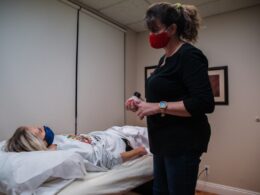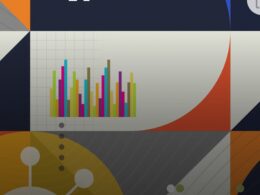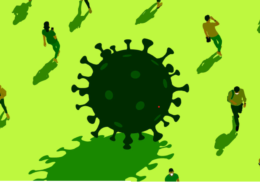Nature Biotechnology
Jay A. Pandit, Jennifer M. Radin, Giorgio Quer & Eric J. Topol
20 June 2022
Key messages edited by:
Joaquim Cardoso MSc.
The Health Revolution — Foundation
Mobile Health — Institute
June 26, 2022
Abstract
- At the beginning of the COVID-19 pandemic, analog tools such as nasopharyngeal swabs for PCR tests were center stage …
- …and the major prevention tactics of masking and physical distancing were a throwback to the 1918 influenza pandemic.
- Overall, there has been scant regard for digital tools, particularly those based on smartphone apps, which is surprising given the ubiquity of smartphones across the globe.
- Smartphone apps, given accessibility in the time of physical distancing, were widely used for tracking, tracing and educating the public about COVID-19.
- Despite limitations, such as concerns around data privacy, data security, digital health illiteracy and structural inequities, there is ample evidence that apps are beneficial for understanding outbreak epidemiology, individual screening and contact tracing.
- While there were successes and failures in each category, outbreak epidemiology and individual screening were substantially enhanced by the reach of smartphone apps and accessory wearables.
- Continued use of apps within the digital infrastructure promises to provide an important tool for rigorous investigation of outcomes both in the ongoing outbreak and in future epidemics.
Structure of the publication
- Abstract
- Main
- Outbreak epidemiology
- Individual screening with symptom checkers
- Contact tracing
- Discussion and outlook
- Acknowledgements
Selected images
Fig. 1: DETECT study results
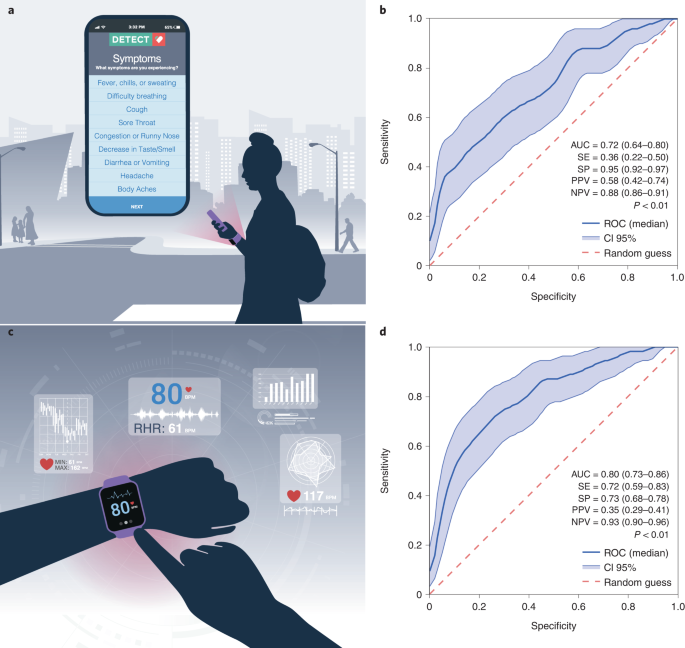
Fig. 2: Manual and digital contact tracing.
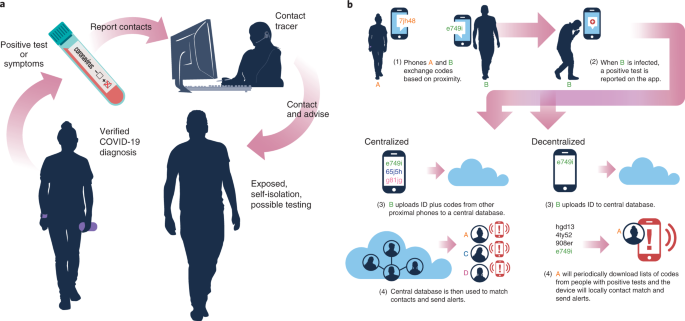
Fig. 3: Geographic variability of NHS COVID-19 app uptake and cases of COVID-19.
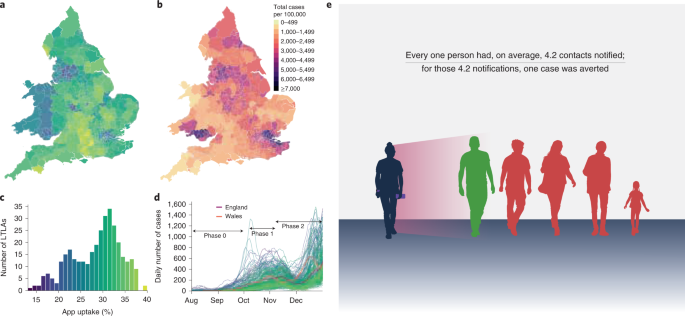
Fig. 4: A possible future multiple integrated app?
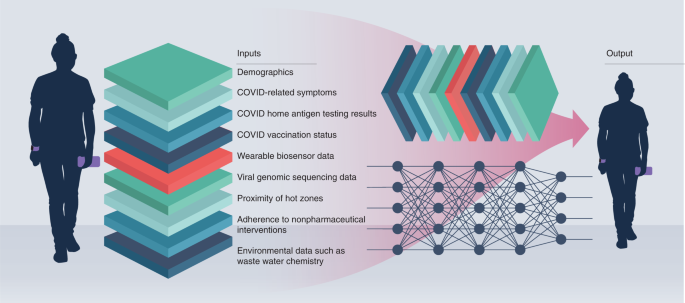
ORIGINAL PUBLICATION (full version excerpt)

Smartphone apps in the COVID-19 pandemic
Nature Biotechnology
Jay A. Pandit, Jennifer M. Radin, Giorgio Quer & Eric J. Topol
20 June 2022
Main
The 1918 influenza pandemic infected 27% of the global population and claimed 50 million lives1. As of February 2022, the COVID-19 pandemic had infected 6% of the global population and claimed close to 6 million lives, both of which are probably gross underestimations2,3. Advances in genomic sequencing, versatile vaccine platforms and manufacturing at scale have led to the development of several vaccines and their rollout at an unprecedented pace4. However, at the beginning of the COVID-19 pandemic we were in a disconcertingly similar situation to 1918, with no known antiviral therapy and an untested public health response to rapid tracking of new infections and timely enactment of outbreak control measures at a global scale. Pre-existing pandemic preparedness plans5from bodies like the World Health Organization focused on manual clinical case reporting, contact tracing and nonpharmaceutical interventions, but to this day continue to overlook the power of digital tools to rapidly scale detecting and tracing the virus and monitoring the effectiveness of interventions6,7. Previous studies had demonstrated the utility of digital health tools like smartphone apps for infectious disease outbreaks8,9, yet the COVID-19 pandemic highlighted a persistent reliance on analog keystones such as in-person nasal swabs for COVID-19 testing10, fax machines11for case reporting and paper vaccination cards12.
With over 6 billion global smartphone users, apps have the potential to generate population-wide, real-time and highly informative data13. Private sector companies already collect geolocation, demographic, personal interest, previous purchase and other types of data for targeted marketing strategies14. However, to successfully realize the potential of smartphone apps in the public health domain, the challenges of digital health illiteracy15, structural inequities16,17and data privacy18,19require investigation and mitigation. As soon as the initial case reports of COVID-19 were published from Wuhan, China20,21and supported by preliminary studies on the potential of multilayer data collection for public health purposes22,23,24there were widespread attempts to use smartphone apps and wearables-with varying levels of success.
Here we review and provide an assessment of the major digital app projects. The projects were selected based on coverage in both scientific and lay media and to highlight consistent constraints and challenges based on the authors’ discretion. We divide the field into three major categories: (1) outbreak epidemiology, (2) individual screening and (3) contact tracing.
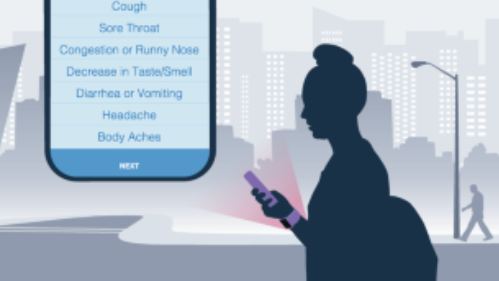
Outbreak epidemiology
Traditional clinical diagnosis-based viral illness surveillance in the United States is delayed by 1–3 weeks25, giving outbreaks the chance to spread to susceptible populations before they are even identified. Smartphone app-collected data can be near real time, pull data from large numbers of people and have the potential to speed up the identification and localization of viral illness hotspots. This is important not only in regard to public health officials investigating outbreaks rapidly and increased public health prevention measures, but also for users to better understand their individual risk to make informed decisions about their day-to-day activities in an ongoing pandemic. We have divided epidemiology into (1) active user participatory surveillance, (2) passive user population-level tracking, (3) individual risk assessment and (4) viral illness forecasting.
Participatory surveillance
Phone and text message-based surveys have been used in rural regions to collect syndromic surveillance data where web-based applications may be unavailable, and have shown potential in supplementing traditional surveillance data26. Numerous syndromic reporting platforms, such as Flu Near You27in the United States, InfluenzaNet28in Europe, Reporta in Mexico29and others that allow citizen scientists to self-report influenza-like illness symptoms into a web- or app-based reporting platform have shown promise in matching the timing and magnitude of viral illness activity.
Given the overlap of symptoms between influenza and COVID-19, many of these participatory surveillance digital apps pivoted to tracking COVID-19. An app-based platform in Brazil30collected syndromic data from 861 participants and found that the participatory data matched spatial and temporal trends of traditional surveillance for COVID-19. This platform could be used to identify communities that should receive priority testing, and to improve surveillance in regions without health care facilities that traditionally collect surveillance data. A study among Swiss health care workers31found that self-reported symptoms through a web-based platform could help monitor COVID-19 and other viral illness activity. Similarly, the COVID Symptom Survey, launched in the United Kingdom and United States, enrolled over 4 million users and helped inform the symptomatology of COVID-19 (ref. 32). In addition to improving surveillance timeliness, these platforms can also be used to conduct research on risk factors, vaccine effectiveness, burden of disease and more29. The challenge with these participatory apps is recruitment, selection bias of participant population to those with access to these platforms, individual survey fatigue with routine symptom reporting, bias towards more reporting when someone is sick rather than healthy, and a lack of specificity of symptoms to a particular viral illness.
Population-level tracking
Kinsa Health’s FLUency program provided connected smart thermometers to schools to allow parents to track their child’s individual risk, and schools to identify grade-level trends for viral illness outbreaks, via an app. The Kinsa thermometers had >2 million users, with publications indicating that the program improved real-time tracking of influenza-like illness36,37,38and even predicted a COVID-19 outbreak in Florida39. Further validation of their COVID-19 map algorithms is necessary, especially for adjudication against case rates reported by public health departments as well as clinical trials showing how they may impact outbreaks from spreading within schools. This is especially relevant as new variants emerge and with varying uptake of vaccination and nonpharmaceutical interventions among children.
Although smartphone apps have been used for outbreak tracking, the primary digital resources for COVID-19 activity were web dashboards such as the Johns Hopkins University (JHU) Covid Map2and Outbreak.info40. The JHU Covid Map provides more geographically granular data than typically provided by government public health sources, showing county-level data in the United States and province-level data in China. Outbreak.info is unique in that it provides genomic surveillance data to enable rapid tracking of the emergence of new variants throughout the globe. Many of these apps and web dashboards (Table 1) harnessed the power of big data, but also demonstrated potential sources of bias41. A powerful confounder was the influence of media hype and increased interest in a topic rather than specific reports or searches from sick individuals, resulting in misinformation. The impact of population-level tracking apps on morbidity and mortality reduction, public health resource allocation, prevention measures and individual risk reduction needs further evaluation.
Table 1 Digital epidemiology and tracking apps for COVID-19
See original publication
Individual risk assessment
Several apps were intended to provide users with individual risk assessment based on population tracking in their area. The Safer-Covid42app gives users information about individual risk based on age, location and type of activity, to help users make informed decisions about their daily risk. Although this app is backed by the “latest available research from the National Institutes of Health (NIH), CDC and others”, further transparency around the algorithm used is needed for validation. China’s Health Code43surveillance app categorized citizens into three categories based on their risk assessment derived by mining location, payment platform and contacts data. Individuals in high-risk categories were barred from entry into certain public places, buildings and transit systems. Ideally, these individual risk assessments would also enhance use of nonpharmaceutical interventions such as mask wearing, social distancing, increased testing or stay-at-home measures. Future work needs to evaluate factors impacting their uptake, continued use and prevention of transmissions, especially in the context of potential breaches of data privacy.
Notably, none of the apps has assessed how users understand risk communication presented in the apps and how this information may impact individual or population behavior and choices. Identification of areas where individuals are participating in high-risk behavior, such as lower masking, increased mobility or low vaccination uptake, may also improve forecasting of regions most likely to experience increased viral illness activity.
Viral illness forecasting
At the beginning of the pandemic, public prevention measures relied on multiple forecasting intiatives44based on incident-case tracking and mathematical models, but few have truly been adjudicated with real-world data. These models had wide-ranging predictions and continued to be trained on clinical surveillance data that had their own limitations, such as changing testing strategies throughout the pandemic, variation in access to care/interventions across regions and changing syndromic definitions as the pandemic evolved. These challenges need further investigation to help inform public health pandemic strategy, rather than hinder it. Other interesting approaches to outbreak forecasting include surveillance at the pathogen level (Table 1). However, given the huge variations in predictions arising from different models over the course of the pandemic, real-time tracking may prove a complementary, or even superior, strategy for informing public health strategy.
Recommendations
The ideal outbreak tracking app would collate data from multidimensional data sources to provide users with (1) individual feedback on their probability of current infection or infection risk, (2) real-time infection rates in their local communities, work or school settings and (3) future predicted risk in their community based on forecasting models. This information needs to be useful to participants to maintain participation and engagement, with individualized action items or access to resources such as home testing, while also aggregating the data to inform early and localized public health action.

Individual screening with symptom checkers
Once an initial definition of the COVID-19 disease syndrome had been established20,21, multiple individual screening and symptom-checker apps were developed. In the early days of the pandemic, apps for symptom checking played a crucial role because not all infected individuals were tested for objective confirmation, due to either lack of access or scarcity of testing resources such as nasal swabs and testing reagents45. Notably, the US Centers for Disease Control and Prevention COVID-like illness case definition also evolved as the pandemic progressed, requiring updates and education. Individual screening apps could have readily been updated to keep up with new knowledge on the infection and might have even helped inform case definition updates by including symptoms that were not commonly reported initially or became more prevalent with new variants. In the text below we divide screening symptom-checker apps into (1) active or (2) passive based on the need for user engagement, including some notable hybrid approaches as well (Table 2).
Table 2 Individual screening apps with active and passive symptom checkers
See original publication.
Active screening
Active-screening apps require the participant to actively interact with the tool on a frequent basis. Their primary limitation is the self-reported nature of the data, requiring the individual to actively participate in the study and report symptoms on a daily basis. For these apps, reliance on continuous user reporting consistently ran into the challenges of smaller-than-expected sample sizes due to survey fatigue, waning user retention and participant bias, limiting the ability to make meaningful conclusions about local viral illness trends.
Passive screening
To overcome the subjectivity of symptom surveys and the burden introduced by active screening, passive and objective biosensor data from wearables were used to detect COVID-19 and other viral illnesses. Passive screening by wearables requires minimal involvement of the individual, and initial studies demonstrated their potential to understand ambulatory physiology and identify subclinical forms of disease49. With an established set of symptoms for screening, wearable sensor manufacturers focused on expanding their indications to detect COVID-19.
The Digital Engagement & Tracking for Early Control & Treatment (DETECT)50study app used a hybrid active and passive approach by incorporating Fitbit or any wrist sensor (smartwatch or fitness band) connected to Apple HealthKit or Google Fit data, in addition to symptom questionnaires. Over 72 days this app enrolled >35,000 users and was the first to demonstrate that passive sensor data improved prediction of COVID-19 in symptomatic cases when added to subjective symptom data23. The algorithm based on self-reported symptoms alone showed an AUC of 0.71 (0.63–0.69) in the detection of COVID-19 cases and, when combined with individual wearable data, the performance increased substantially to an AUC of 0.80 (0.73–0.86; Fig. 1). The proposed algorithm now integrates a broader range of signals and provides an explainable framework to highlight the most important features triggering detection51. Analysis of resting heart rate (RHR) for symptomatic COVID-19-positive individuals in the DETECT cohort showed an average initial increase in RHR, followed by transient bradycardia and prolonged relative tachycardia that was sustained and resolved 3 months after symptom onset52.
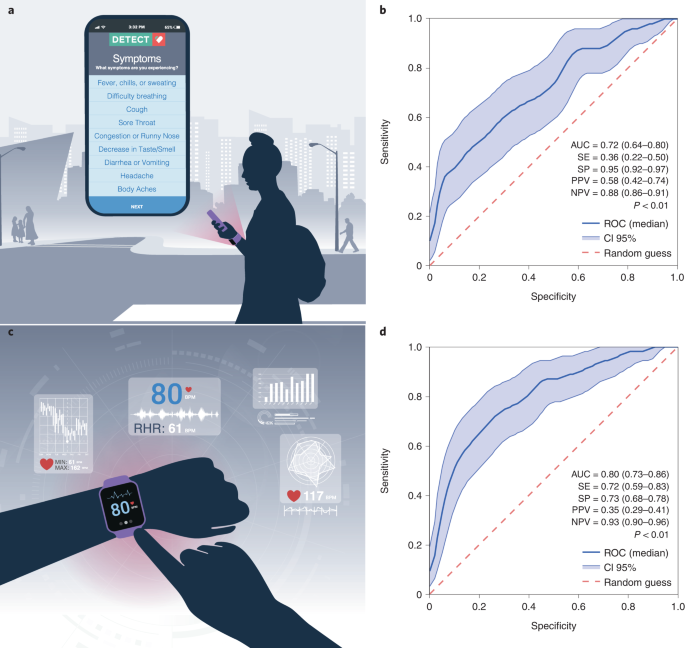
a– d, The DETECT study evaluated the added utility of wearable data to symptom questionnaires. a, Screenshot of symptom questionnaire on the DETECT study platform. b, The algorithm based on self-reported symptoms alone had a ROC-AUC value of 0.72. c, d, Passive wearable data from any wrist sensor connected to the Apple HealthKit or Google Fit ( c) was then added to the subjective symptom questionnaire, and demonstrated a ROC-AUC value of 0.80 ( d). CI, confidence interval; SE, sensitivity; SP, specificity; PPV, positive predictive value; NPV, negative predictive value.
In follow-up studies, novel variations in biometrics have been identified for people who have received COVID-19 vaccinations53. In the DETECT cohort, individual RHR baseline increased in the days after vaccination with a peak on day 2 and return to normal on day 6. In individuals who received the Moderna Spikevax (mRNA-1273, elasomeran) vaccine, in particular those who had previously tested positive for COVID-19 and individuals aged <40 years, a stronger effect was noted after the second vaccination dose than after the first (average change 1.6 versus 0.5 beats per minute). These studies exploiting continuous passive data from personal sensors could potentially be used to identify inflammatory reactions and other prognostic measures, which might shed light on variation in vaccine-induced immune responses.
Other notable projects like the Stanford Wearables Study54concomitantly developed a similar approach, supporting the use of wearables to detect COVID-19 even in presymptomatic individuals55,56,57. Another example is the Corona-Datenspende app, which was used by >500,000 Germans. This app had impressive engagement due to its passive nature and led to the development of a fever map to identify regions in Germany with a higher than normal number of fever cases58. The Corona-Datenspende cohort also demonstrated prolonged changes in vital signs for COVID-19-positive individuals, replicating and validating the results published on postacute SARS-CoV-2 infection by the DETECT study51,53.
More sophisticated sensors can now monitor respiratory rate and heart rate variability to improve detection accuracy, and some even have the ability to help distinguish between COVID-19 and other viral illness59,60. Another creative approach is to coopt wearables already in use for other applications to gather data on COVID-19: for example, the Ava bracelet-a wearable device previously adopted as a fertility tracker-was used to monitor vital signs during SARS-CoV-2 infection61.
Recommendations
Taking all of the above considerations into account, the ideal sensor-based screening app should integrate several aspects currently presented in multiple apps. First, to be accessible to an under-represented and underserved population, it should be able to integrate the information from any sensor, including that from less sophisticated mobile devices with limited features. Similarly, the app should adapt not only to the desired level of participation of the individual, allowing the participant to easily self-report information on contact with positive individuals, test results or vaccine status, but also be able to function in the absence of this information. The data from the app should be interpretable, highlighting the most important features used in the detection51. Most importantly, it should enable the detection of COVID-19 in real time based on past data57. Furthermore, the ideal app should be regularly updated to identify not only COVID-19 cases, but also other infectious and noninfectious factors impacting one’s health, becoming a passive screening companion for the individual that can trigger questions or ask for feedback from the individual only when necessary.

Contact tracing
Contact tracing, however, comes at a substantial cost to data privacy and security. Private sector companies aggregate and use these data for marketing purposes, but the pros and cons of preserving data privacy by tapping into this network during a pandemic continue to be debated. During the pandemic adoption and public acceptance and implementation of contact-tracing apps depended on local geopolitics, existing technology infrastructure and cultural differences. China66, South Korea66,67and Taiwan68, due to geographic proximity to the incident cases of COVID-19, initially overlooked privacy concerns and retrospectively mined data from private sector organizations such as mobile payment platforms, social media, public transit records and closed-circuit television footage for outbreak tracking and tracing. Realizing the potential of collecting these data in real time through smartphone apps, many contact-tracing and exposure-notification apps were developed but ran into the rate-limiting step of requiring downloading and activation to be functional69.
In April 2020, Google and Apple joined forces to develop the Google Apple Exposure Notification (GAEN) system70that allowed health agencies to provide exposure notifications without the requirement of an app download. The GAEN system was intended for public health use but did raise major privacy concerns, leading to the development of privacy-preserving frameworks that contact-tracing apps could opt to follow. Most contact-tracing apps can be divided into (1) centralized, where matching and notification are done at a central server or (2) decentralized, where matching and notification are done by the individual smartphone (Fig. 2). We discuss these in turn below.
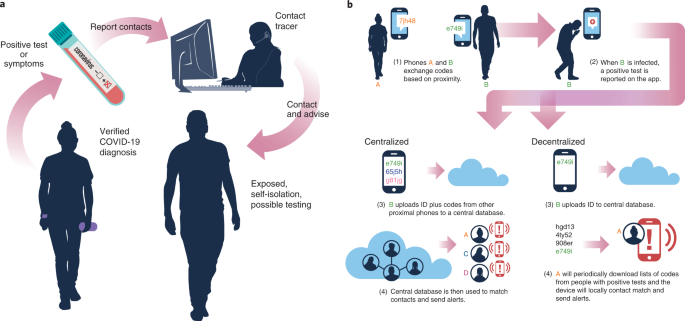
Centralized approaches
China’s Health Code app had >900 million users in >200 cities43while India’s Aarogya Setu app had 50 million users within 13 days71, demonstrating the reach and speed of smartphone apps in large populations when promoted by a central authority. Other examples of centralized contact tracing apps are Singapore’s TraceTogether72and Australia’s COVIDSafe73, which were downloaded by 17 and 25% of the nations’ populations, respectively. Although there was significant outreach for all these centralized approaches, none met their targets and all had substantial challenges, including app download issues, hoax apps, incompatibility with other apps, lack of access to smartphones in vulnerable populations and, most critically, data privacy and security concerns and fears of invasive government surveillance74,75. Amnesty International even called out Bahrain’s BeAware, Kuwait’s Shlonik and Norway’s first Smittestop contact-tracing apps as “endangering the privacy and security of their populations”76. In Saudi Arabia, the Tawakkalna contact-tracing app became required for school entry for any child >12 years77. Notably, despite the higher national penetrance levels with centralized apps, there are still no outcomes publications as to whether these approaches were successful in mitigating waves of the pandemic. Although most unitary states and some democracies still use a centralized approach, most nations have pivoted to decentralized approaches.
Decentralized approaches
An example of the pivot from centralized to decentralized-and the most well-studied contact-tracing app-is the United Kingdom’s National Health Service (NHS) COVID-19 app. From its launch on 24 September 2020 to the end of December 2020, the app was downloaded onto 21 million phones and sent out 1.7 million notifications in England and Wales (Fig. 3). In a rare-outcomes evaluation publication on digital contact tracing, every 1% increase in the number of NHS COVID-19 app downloads led to a 0.8–2.3% reduction in the number of COVID-19 infections78. Additionally, approximately one case was averted for each user consenting to notification of their contacts; in absolute numbers, Wymant et al.78suggest that 100,000–900,000 cases were averted by the NHS COVID-19 app over the 13-week study. The main limitations of the Wymant et al.78study are confounding factors that are encountered in any observational study, notably sociodemographic factors such as urbanization and socioeconomic status among others. However, the report clearly demonstrates that digital contact-tracing apps can be a powerful supplement to nonpharmaceutical interventions during a pandemic.
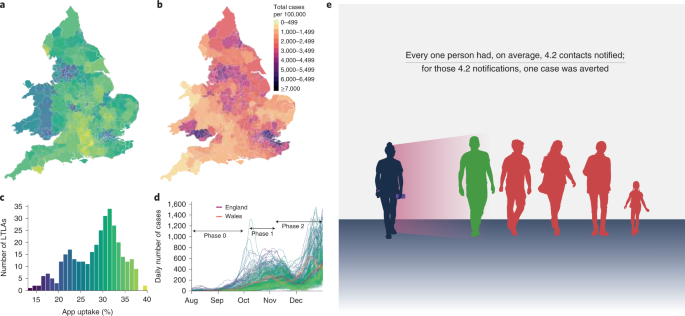
a– e, Geographical distribution of COVID-19 cases in England and Wales78. Map ( a) and histogram ( c) of NHS COVID-19 app uptake by local-tier local authorities (LTLAs). Colors in a indicate app uptake as shown in c. b, Cumulative cases of COVID-19 per 100,000 population over analysis phases 0 (before app launch), 1 (1 October 2020 to early November 2020, with first version of app) and 2 (early November to 31 December 2020, with improved version of app). d, Seven-day rolling mean of daily cases of COVID-19 per 100,000 population. e, Ultimately the NHS COVID-19 app showed that for every one person who consented to notification of contacts, on average 4.2 contacts were notified and one case of COVID-19 was averted.
Despite the availability of many other contact-tracing national-, state- and organization-level apps, the only other app with published outcomes is the SwissCovid app. In a city-level (Zurich, Switzerland) retrospective analysis, 537 app users received a positive SARS-CoV-2 test result, 324 of whom had received and entered an upload authorization code79. This code triggered an app notification for 1,374 proximity contacts and led to 722 information hotline calls, with an estimated 170 calls receiving a quarantine recommendation. In this case, although there is a positive signal for contact-tracing apps leading to quarantine recommendations and even identification of SARS-CoV-2, it represented only up to 5% of those captured by manual contact tracing, suggesting that contact tracing should not replace, but instead supplement, manual contact tracing to push nonpharmaceutical interventions.
In the United States, due to the lack of a national contact tracing app, most states released their own versions of decentralized contact-tracing apps. A recent investigation on the uptake of US digital contact tracing80showed that, as of May 2021, a total of 36.7 million Americans had opted into exposure-notification apps. Furthermore, although there have been no rigorous outcomes publications looking at the effectiveness of contact-tracing apps in the United States, media coverage has reported them as not worth the risk to privacy81.
Although prepandemic laws like the Health insurance Portability and Accountability Act, the European Union’s General Data Protection Regulation and other local regulations such as the California Consumer Privacy Act provided some guidance, no overarching federal or global regulations specifically mention contact-tracing apps85,86. Data privacy concerns prompted the development of privacy-preserving frameworks like the Decentralized Privacy-Preserving Proximity Tracing and Pan-European Privacy-Preserving Proximity Tracing that contact-tracing apps could opt to follow; at this present time, however, there is no accountability. Despite these initial steps, data privacy concerns continue to be the primary reason for low participation rates and the most common reason that countries have hit the pause button on contact-tracing app rollouts. Exacerbating the ethical debate was the use of apps and wearables for quarantine compliance. Examples include mobile geofencing in Taiwan, trackable wristbands in India and South Korea, trackable tokens in Singapore and even ankle shackles in Australia, none of which have outcomes reported in the literature available to justify such measures87. Overall, peer-reviewed studies are needed to evaluate the effectiveness of digital contact-tracing apps in other regions to justify the extent to which the technology was used during COVID-19.
Recommendations
The ideal contact-tracing app would work in real time, preserve data privacy, comply with local regulations, lead to actionable and measurable outcomes, be on local devices to avoid bandwidth issues and, for public health purposes, not require opting in. In addition, although contact tracing has largely been based on contact proximity, it should also take into account local biometric, pathogen and environmental data to improve and potentially rank the type of exposure and avoid issues like the ‘pingdemic’88. Although this may seem like a moonshot, with federated learning approaches enabled by edge computing and the evolution of decentralized blockchain technology, the solution might be closer than we think.

Discussion and outlook
Despite the widespread use of smartphone apps as public health tools during the COVID-19 pandemic, and with vast amounts of data aggregated, very few reports have been published detailing outcomes that can inform pandemic strategy.
Outbreak-tracking apps that harness big data from multiple sources can provide real-time data about viral illness trends that can be updated frequently, but may be subject to confounders including greater media coverage and participation bias.
Individual-risk apps are available but have no data on case reduction or increased use of nonpharmaceutical interventions.
Symptom-checker apps and wearables show promise with advances in sensor functionality for infection screening, but a need still exists for truly passive and unobtrusive individual screening systems that become a part of daily life and can function as a supplementary public health tool during a pandemic.
Contact-tracing apps are abundant, but only a few have associated peer-reviewed publications reporting outcome data that demonstrate the success of contact tracing and exposure notification; in this context, is there enough evidence to justify the risks to data privacy and security of such apps?
Furthermore, to begin a rigorous evaluation of the efficacy of contact-tracing apps we need first to ensure the representativeness of the data and data standards. Although contact-tracing apps are abundant, use was less frequent in Africa and South America, highlighting the challenge of global inequity-especially as many low-to-middle-income countries still do not have the ability to fully vaccinate their populations.
Given the ubiquity of these apps, further investigation is necessary around barriers to adoption, optimal privacy preservation within different geopolitical environments, effective implementation (engagement and retention) with cultural inclusivity, and overall effectiveness (considering varying technology infrastructures).
Data privacy and participant bias are consistent challenges of any global digital public health intervention.
Although privacy-preserving frameworks exist, universal adoption with a top-down approach will always be a challenge.
It might be time for developers of smartphone and wearable apps to build privacy preservation and deidentification options at the edge (that is, user level).
Ethical frameworks and committees should be developed to oversee the use of these technologies at a global scale91.
Accessibility, despite the global penetration of smartphones, will also never be 100%, especially in lower-income, rural and low-technical-literacy populations.
Furthermore, retention within health apps continues to be a challenge and can potentially skew data, with certain populations under-represented in biomedical research more likely to drop out without culturally customized initiatives for engagement.
Another evolving challenge in the current phase of the pandemic is notification fatigue, which is the result of too many poorly working apps that are unnecessarily alerting the individual or notifying them to self-isolate, sometimes even creating a pressure not to get tested despite having symptoms.
This pingdemic effect demonstrates that even digital tools that work effectively have limitations when it comes to behavioral health. An outbreak-tracking app may mark every neighborhood as a hotspot, a symptom-tracking app may ask you to take a test every day or multiple times a day and a contact-tracing app may ask you to isolate all the time. Outcomes evaluations could inform how risk and outbreak communication can be tailored to have maximal impact.
This Review’s primary limitation is also its conclusion-that there is a glaring need for more published reports detailing outcomes-related investigations analyzing the efficacy of COVID-19 apps.
Although we have attempted to provide a global review of major digital app projects, the final selection of projects was limited to what has been highlighted by both scientific and lay media coverage and the authors’ discretion.
In infectious disease, digital health tools and apps now open new opportunities for both individuals and public health systems.
For asymptomatic individuals, apps make it possible to know when vital signs have changed from baseline, raising awareness of the potential for being infected; for public health authorities, the development of a cluster of individuals from app data can enable early detection of a possible outbreak.
They also have relevance in the context of pharmacologic intervention; with the FDA clearance of subcutaneous monoclonal antibodies for the prevention of COVID-19 for individuals with known exposure and oral therapies for symptomatic individuals with COVID-19, app data could better guide the use of relevant treatment regimens.
The combination of wearable sensor data notification and rapid home antigen testing results also promises to provide greater confidence in infection diagnosis, thereby facilitating the more efficient initiation of contact tracing.
Looking forward, the integration of the functionality of several different apps into a single, user-friendly one would be a substantial practical advantage.
Through digital tracking of continuous vital signs via wearable sensors, along with relevant clinical data, there now exists the potential for remote monitoring of patients with COVID-19, obviating hospital admission.
This would require assessment and validation through large, prospective clinical trials that compare remote monitoring with standard care, to prove noninferiority and safety of digital surveillance.
At the population level, an obvious and attainable future direction is to build public health systems with multidimensional inputs that include mobility data, comprehensive and fully encrypted electronic health data, wearable or environmental/atmospheric sensors for infectious agent wastewater surveillance, genomic sequencing data and real-time analytics (Fig. 4).
These layers of orthogonal data would provide an enhanced view for any individual with a smartphone and web access as to their specific risk level, along with a better path to prediction of new outbreaks.
These represent exciting directions and challenges to develop, but there is little sign that they are being pursued and, despite the data being available, there is inadequate reporting of outcomes from apps in peer-reviewed publications. It is time to respect and optimize the power of these digital health tools.

In the current pandemic, while many apps were made to address specific public health challenges, it is now time to merge datasets and analyze multiple layers of data such as demographics, symptoms, testing, vaccination status, wearable sensor, genomic sequencing, geolocation, personal behavioral risk and environmental data to better inform pandemic strategy, individual risk and risk communication, to ultimately push adherence of impactful actions such as nonpharmaceutical interventions and vaccinations.
In the current pandemic, while many apps were made to address specific public health challenges, it is now time to merge datasets and analyze multiple layers of data … to better inform pandemic strategy, individual risk and risk communication, to ultimately push adherence of impactful actions such as nonpharmaceutical interventions and vaccinations.
Acknowledgements
This work was funded by grant number UL1TR002550 from the National Center for Advancing Translational Sciences (NCATS) at the National Institutes of Health (NIH) (E.J.T.).
Author information
Authors and Affiliations
Scripps Research Translational Institute, Scripps Research, La Jolla, CA, USA Jay A. Pandit, Jennifer M. Radin, Giorgio Quer & Eric J. Topol
Northwestern University Feinberg School of Medicine, Chicago, IL, USA
Jay A. Pandit
Peer review information
Nature Biotechnology thanks Michael Snyder, Onicio Batista Leal Neto and Tim Spector for their contribution to the peer review of this work.
References and Additional information
See the original publication
Cite this article
Pandit, J.A., Radin, J.M., Quer, G. et al. Smartphone apps in the COVID-19 pandemic. Nat Biotechnol (2022). https://doi.org/10.1038/s41587-022-01350-x
Originally published at https://www.nature.com on June 20, 2022.





